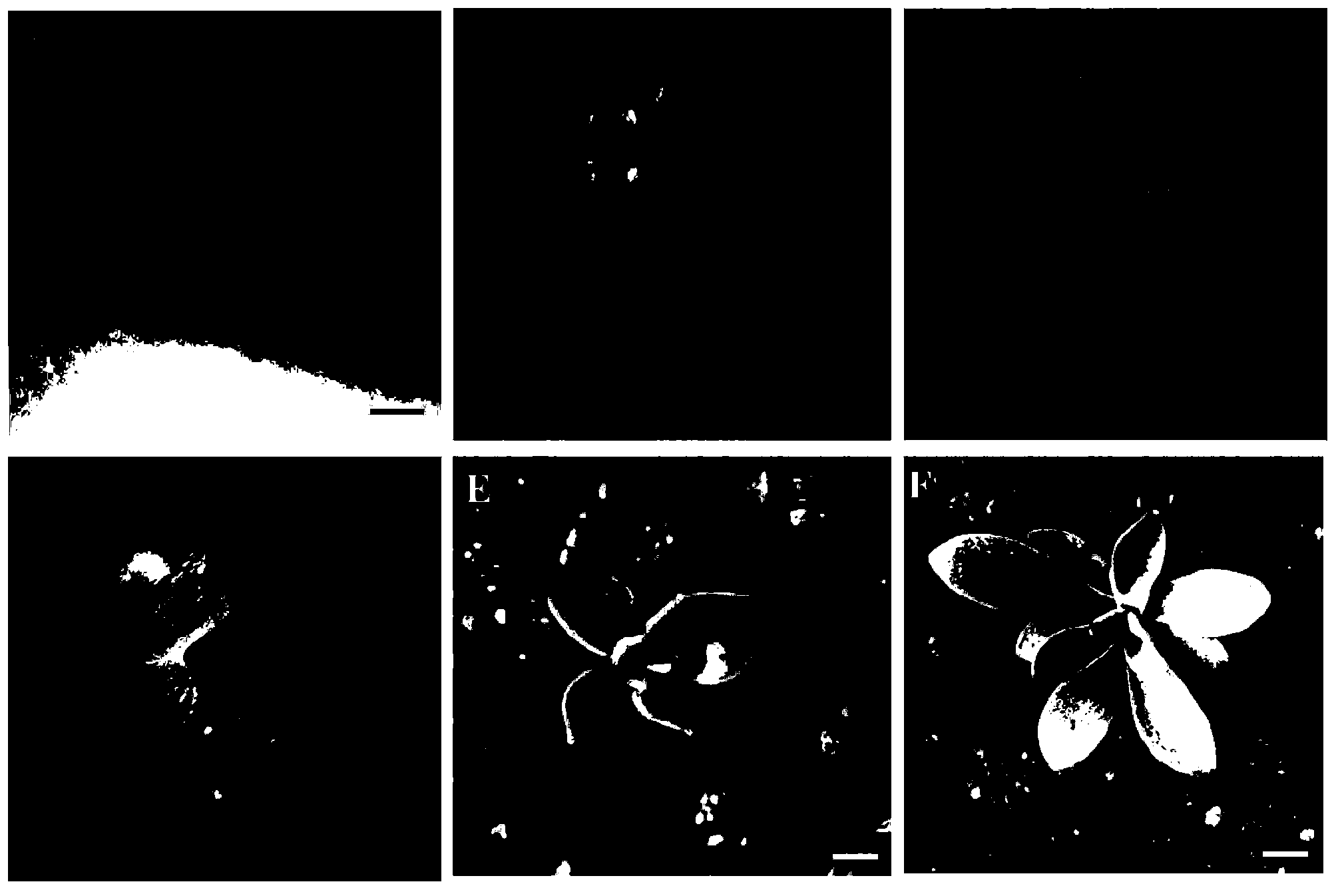Method for rapid in-vitro propagation of Crassulaceae plant
A technology of Crassulaceae and plants, which is applied in the field of rapid in vitro propagation of Crassulaceae plants, can solve the problems of long cycle, easy degradation of traits, and limitations in the research, exploration and utilization of the physiological characteristics of Crassulaceae plants, so as to shorten the growth cycle and improve germination rate, the effect of improving breeding efficiency
- Summary
- Abstract
- Description
- Claims
- Application Information
AI Technical Summary
Problems solved by technology
Method used
Image
Examples
Embodiment 1
[0063] (1) Medium preparation
[0064] Prepare plant MS solid medium, add GA 3 (Gibberellin, the final concentration is 5mg / L) and BA (benzylaminoadenine, the final concentration is 0.5mg / L), adjust the pH value to 5.8, high temperature and high pressure sterilization, pour into the 9cm plate for subsequent use.
[0065] Prepare MS medium containing 1mg / L BA (benzylaminoadenine) and 0.1mg / L NAA (naphthaleneacetic acid) at the same time; prepare MS medium containing 0.2mg / L BA (benzylaminoadenine), 0.02mg / L NAA ) and 1mg / L gibberellin GA 3 MS medium.
[0066] (2) Seed disinfection
[0067] Put the Crassulaceae seed Guanghan Palace into a 1.5ml EP tube, add 0.01-0.05% trace potassium permanganate solution (lavender) to soak for 1 hour, rinse and transfer to a 1.5ml EP tube and add 10% sodium hypochlorite solution for treatment 8 minutes, during which the seeds were mixed with the solution for 3-5 times with a vortex shaker, and the solution was sucked out after being placed ...
Embodiment 2
[0083] The steps of the present embodiment are basically the same as in Example 1, except that the red paw seeds are used in the difference.
[0084] The experimental procedure was repeated three times, and a total of 265 regenerated plants of Red Claw were obtained. After testing, the phenotype of the plant was 100% consistent with the phenotype of the parent. The contemporary reproduction factor is 15-20 seedlings / explant and the regeneration frequency is 100%.
[0085] Using conventional methods, it takes about 14 months for red claw to become commercialized large seedlings, but in this example, it only takes 8-10 months to obtain commercialized large seedlings through in vitro rapid propagation, which greatly shortens the time required for cultivation.
Embodiment 3
[0087] The steps of the present embodiment are basically the same as in Example 1, except that sweet-scented osmanthus seeds are used.
[0088] The experimental procedure was repeated three times with a contemporary reproduction factor of 20-25 seedlings / explant and a regeneration frequency of 100%. A total of 279 regenerated plants of Osmanthus osmanthus were obtained. After testing, the phenotype of the plant was 100% consistent with the phenotype of the parent.
[0089] Using conventional methods, it takes about 16 months for Osmanthus osmanthus to become commercialized large seedlings, but in this example, it only takes 8-10 months to obtain commercialized large seedlings through in vitro rapid propagation, which greatly shortens the time required for cultivation.
PUM
 Login to View More
Login to View More Abstract
Description
Claims
Application Information
 Login to View More
Login to View More - R&D
- Intellectual Property
- Life Sciences
- Materials
- Tech Scout
- Unparalleled Data Quality
- Higher Quality Content
- 60% Fewer Hallucinations
Browse by: Latest US Patents, China's latest patents, Technical Efficacy Thesaurus, Application Domain, Technology Topic, Popular Technical Reports.
© 2025 PatSnap. All rights reserved.Legal|Privacy policy|Modern Slavery Act Transparency Statement|Sitemap|About US| Contact US: help@patsnap.com

